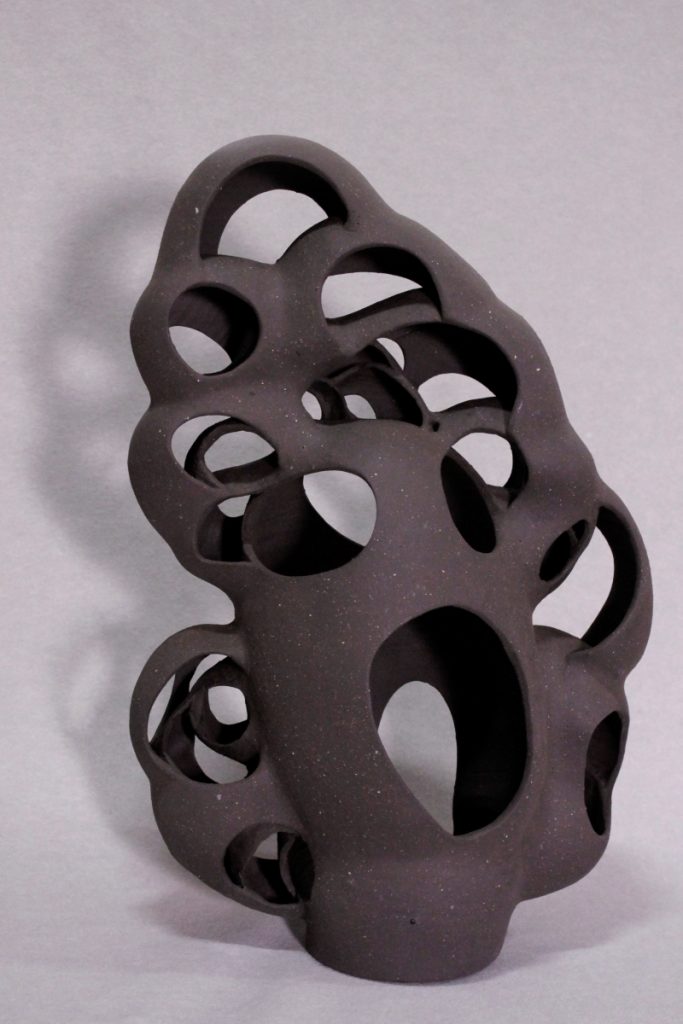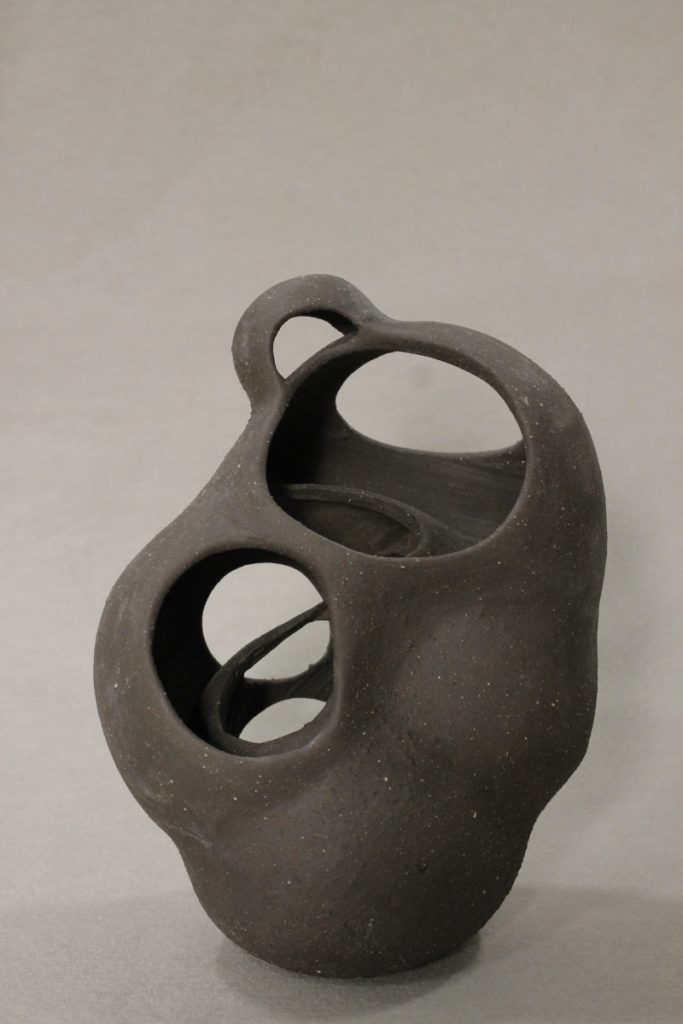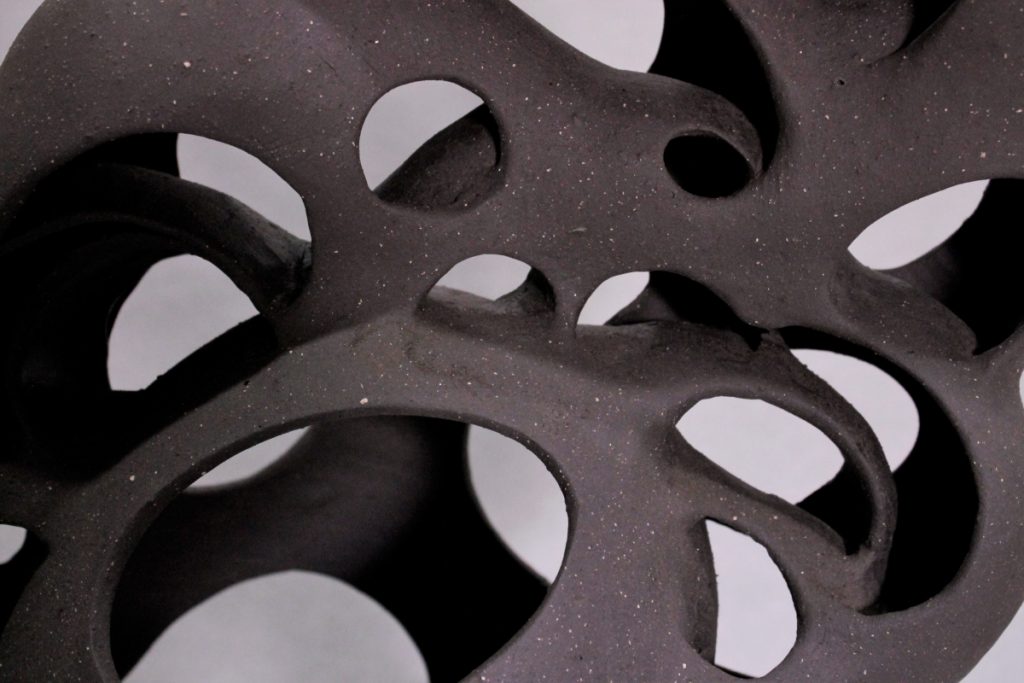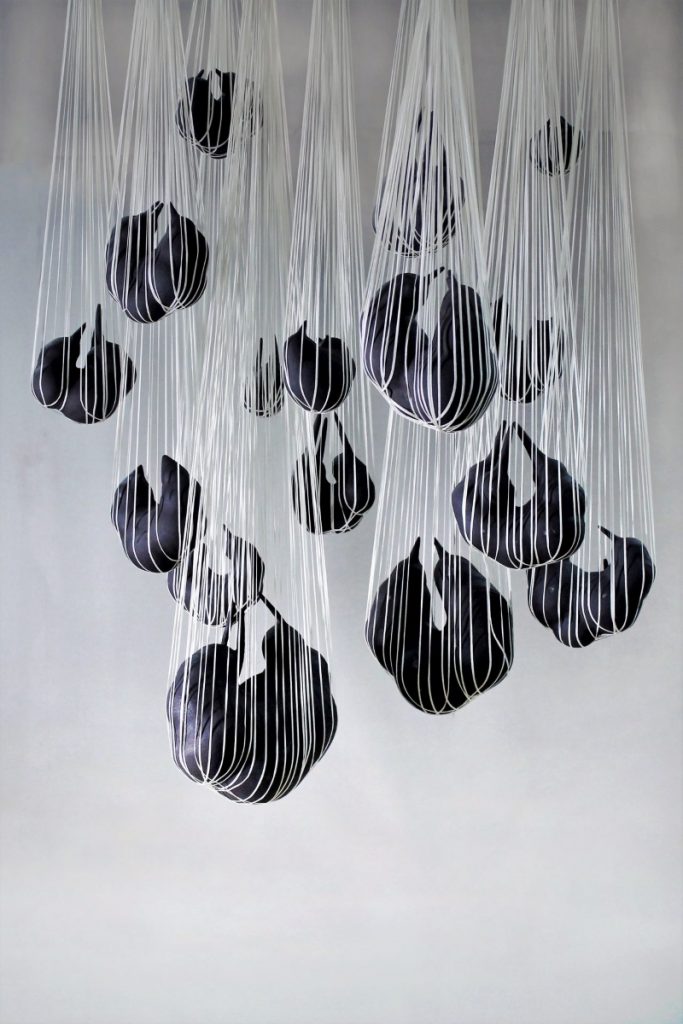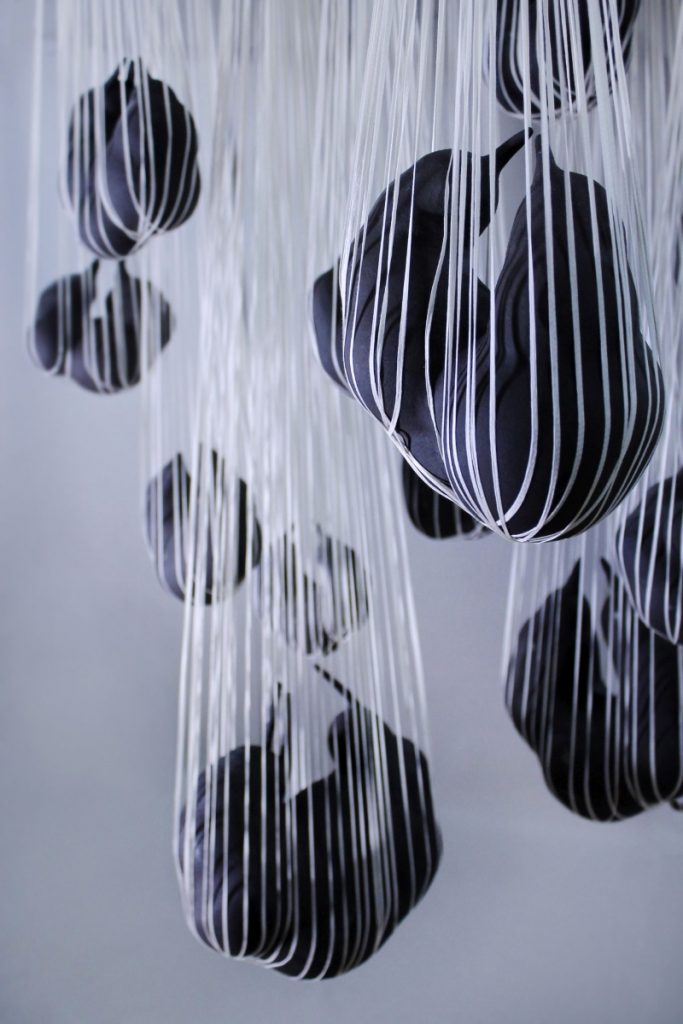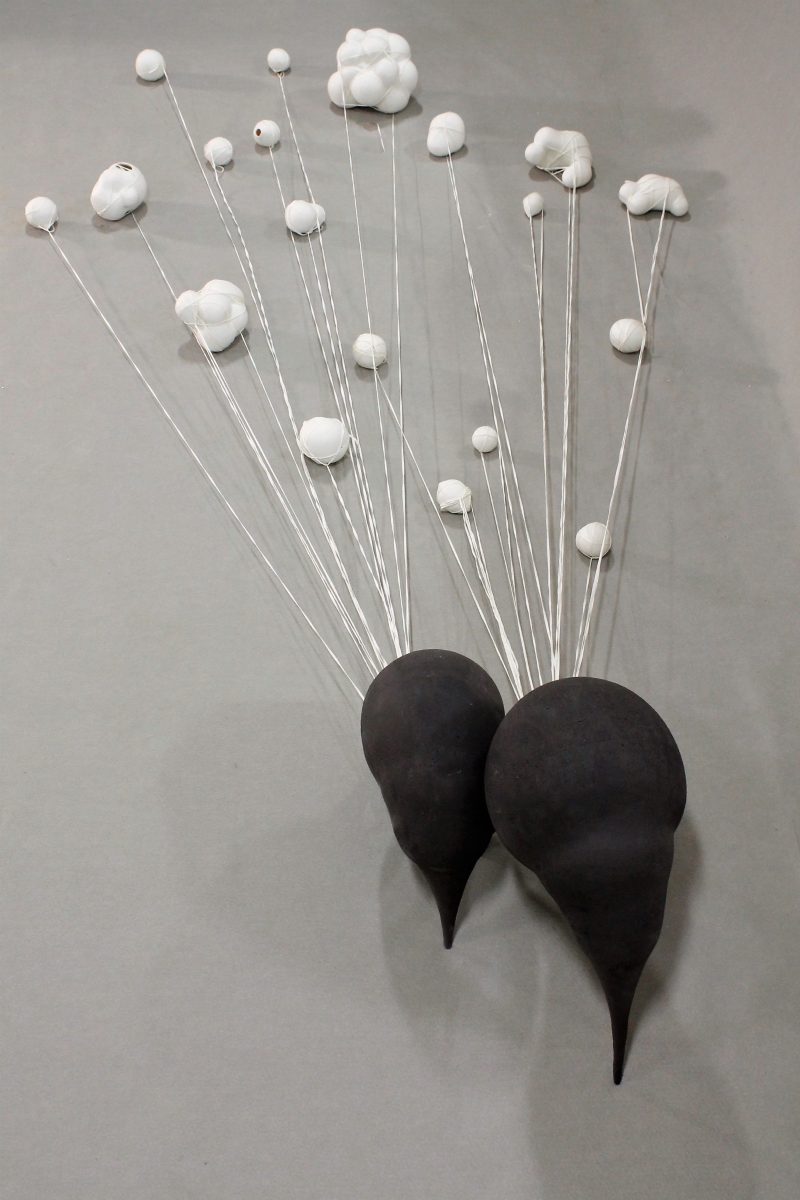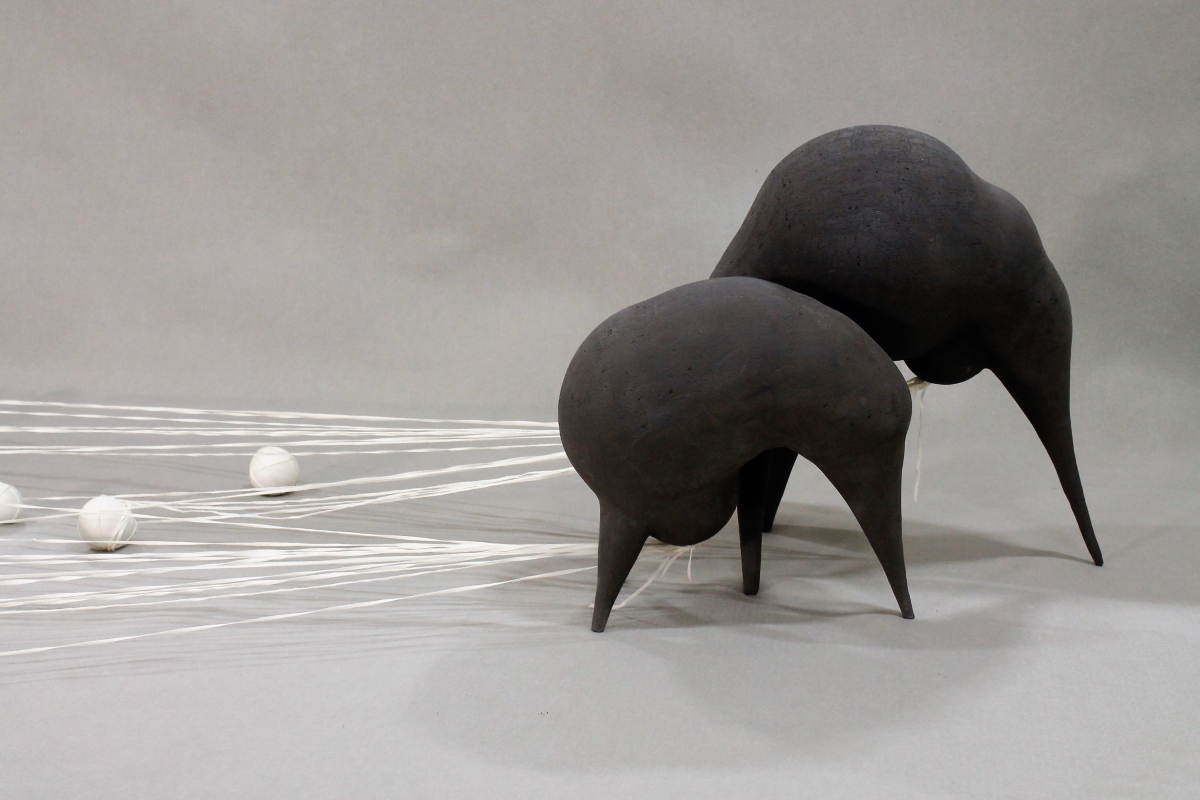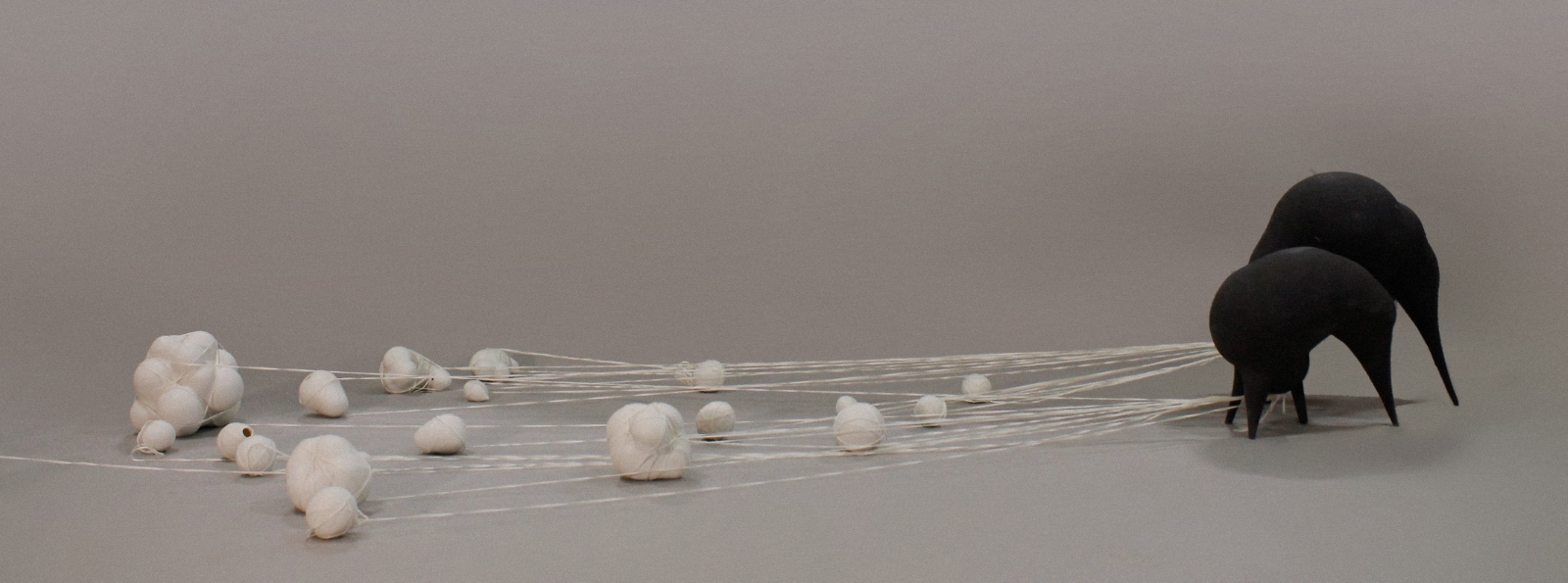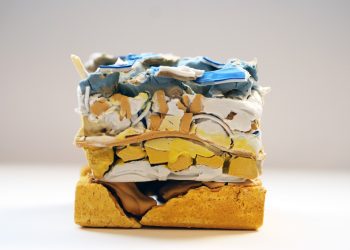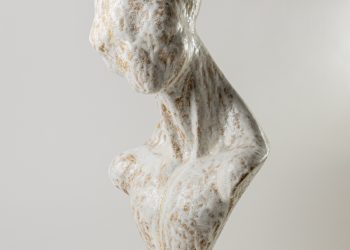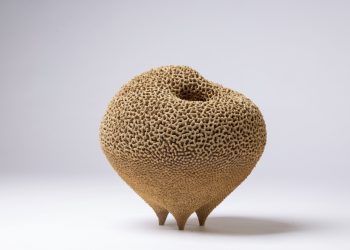Kristina Rutar: Selected works, 2017-2019
Anatomy of a Void
Anatomy of a Void is a dichotomous perception of the environment and surroundings, on the interpretative as well as the aesthetic level. The forms indicate variations of decaying objects, evoking a sense of skeletal remains or stone like fossils of anonymous beings. There is an emptiness inside the objects which is impounded by web-like structures. The space within and around the sculpture’s form emphasizes a sense of freedom and captivity, growth and decay, and construction and deconstruction. In this captured moment of evasive emptiness, we see reflections of fragility in relationships, echoing the unravelling of an individual. The object’s form subordinates to emptiness, which dictates the material’s form and shifts to its needs. It bends, perforates, deforms and cuts into its own flesh of the form, asserting a space of its own. Anatomy of a Void is a purposeful carving of emptiness, an attempt to seize its quintessence, giving form to something absent and distant.
Self-portrait
The main characteristics of the work Self-portrait is the ambiguity of the form. On one hand, the sculptures are present in a safe, isolated area, covered with white cotton-strings that protects them. The environment is meditative, the time stops and the form has its own time to grow. On the other hand, the same form can be seen as a cage or a trap for a small, fragile individual. Unable to move freely, limited to the space defined by strings. However, through the composition of the work, the idea of further development after growth is strongly expressed.
The work is a unique dichotomy between the space of shelter and the space of unlimited freedom, the forms are growing and breaking free. It seems as if the abstract forms will soon rip out of their limited space and fully live somewhere else, away from the viewer’s eyes.
Dichotomy
In Dichotomy, the relationship between two masses – fragments of white forms and the three-legged forms, is defined by the tense cotton strings, which connect them. The tension raises the question – are the white porcelain forms being taken away from somewhere or are they carried to safety? The dichotomy is a search for balance in conflicting relationships. These are formed on the basis of abstract forms that are born from the interpretation of the surroundings and real images.
Photos courtesy of the artist


